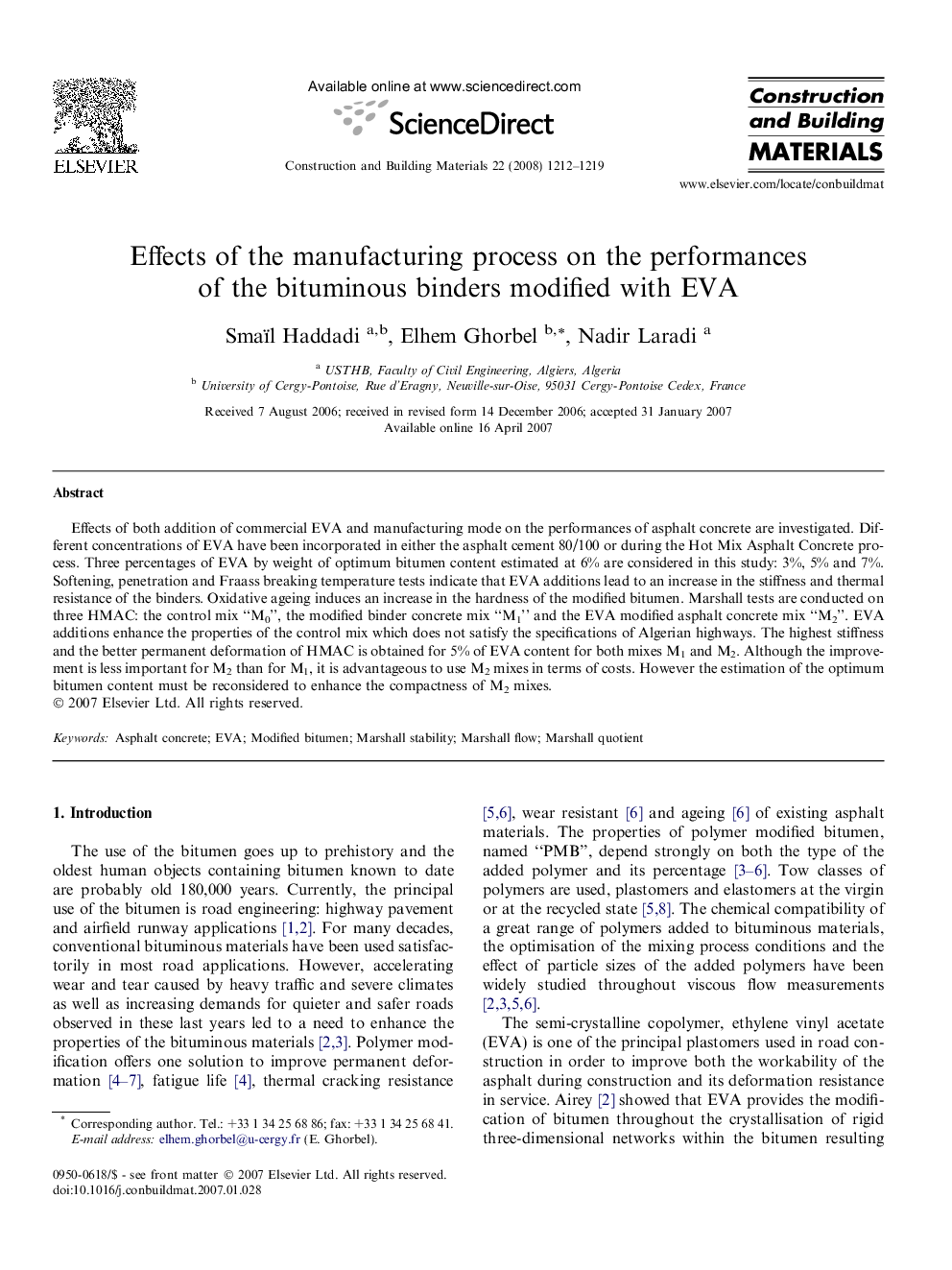| Article ID | Journal | Published Year | Pages | File Type |
|---|---|---|---|---|
| 260553 | Construction and Building Materials | 2008 | 8 Pages |
Effects of both addition of commercial EVA and manufacturing mode on the performances of asphalt concrete are investigated. Different concentrations of EVA have been incorporated in either the asphalt cement 80/100 or during the Hot Mix Asphalt Concrete process. Three percentages of EVA by weight of optimum bitumen content estimated at 6% are considered in this study: 3%, 5% and 7%. Softening, penetration and Fraass breaking temperature tests indicate that EVA additions lead to an increase in the stiffness and thermal resistance of the binders. Oxidative ageing induces an increase in the hardness of the modified bitumen. Marshall tests are conducted on three HMAC: the control mix “M0”, the modified binder concrete mix “M1” and the EVA modified asphalt concrete mix “M2”. EVA additions enhance the properties of the control mix which does not satisfy the specifications of Algerian highways. The highest stiffness and the better permanent deformation of HMAC is obtained for 5% of EVA content for both mixes M1 and M2. Although the improvement is less important for M2 than for M1, it is advantageous to use M2 mixes in terms of costs. However the estimation of the optimum bitumen content must be reconsidered to enhance the compactness of M2 mixes.
